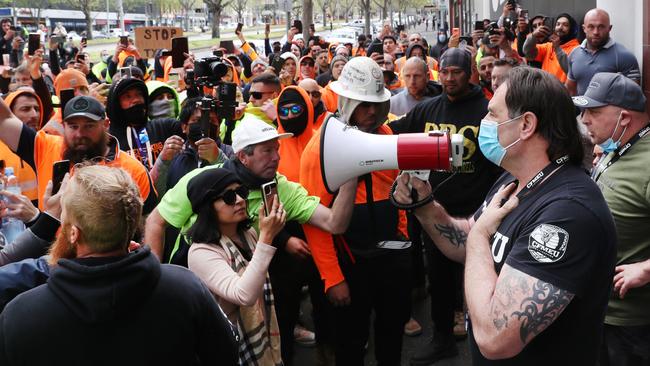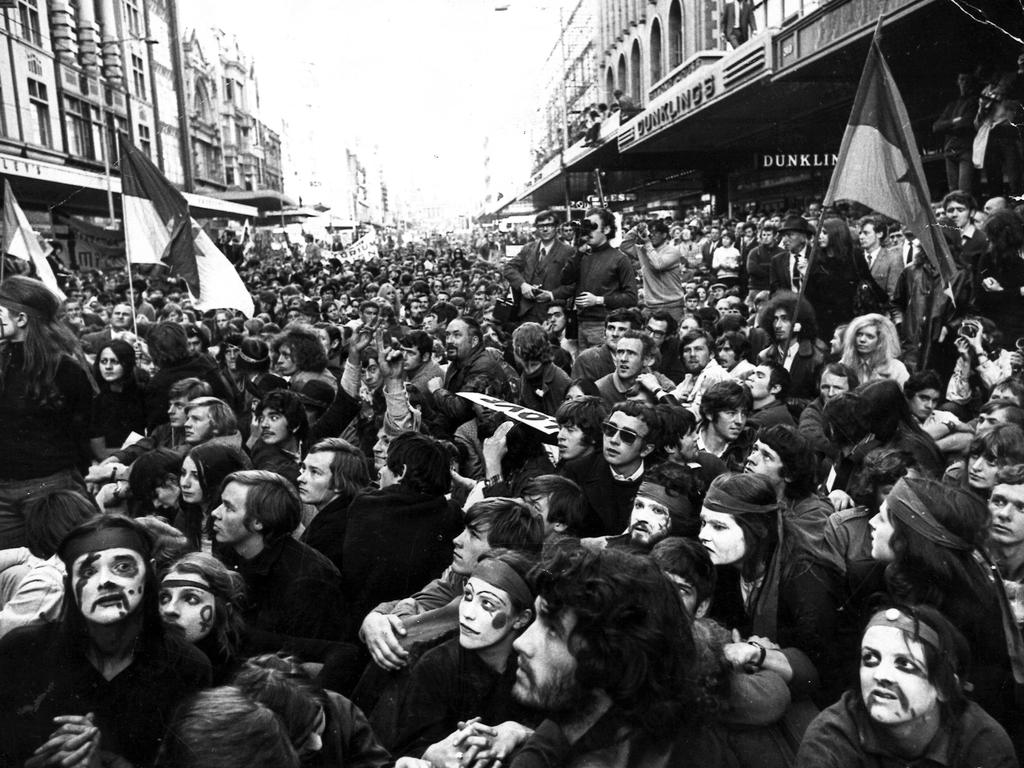
What is more problematic, however, is whether Daniel Andrews’ government, and that of Gladys Berejiklian in NSW, acted properly in prohibiting the potentially peaceful demonstrations planned for last weekend.
To say that is not to endorse those demonstrations’ objectives; nor is it to deny that allowing exceptions to the public health orders inevitably raises the question of where to draw the line.
But in confronting that question, both governments should have been guided by a principle so fundamental as to merit being considered constitutional: that emergency measures should not be used to stifle peaceful opposition to the emergency measures themselves.
It is, in effect, inevitable that governments will, on occasion, resort to forms of emergency rule that give the executive substantially greater powers than it normally enjoys. However, precisely because the emergency powers are so sweeping, any erosion of the mechanisms of democratic accountability – including peaceful protest – must be viewed with great concern, especially when what is at issue is the renewal of those powers or their use to limit ordinary freedoms.
The historical parallels in this respect are fraught. But it is no accident that Clinton Rossiter, in his classic study of emergency rule, Constitutional Dictatorship (1948), placed so much stress on the risk that preventing effective democratic oversight of the emergency powers would convert those powers, which should serve as “the rock of the republic”, into a “bridge to despotism”.
Obviously, that doesn’t imply that there is an absolute right of public protest, regardless of the circumstances or of the threat of violence. While the first amendment to the US constitution provides that “Congress shall make no law abridging … the right of the people peaceably to assemble”, the great Victorian constitutionalist AV Dicey accurately summarised the British tradition when he wrote: “English law does not recognise any special right of public meeting either for a political or for any other purpose.”
Rather than being enshrined in law, permission to use public places for protests was, he argued, properly viewed as a “political right” or customary privilege whose exercise was always heavily qualified by the need to avoid causing a public nuisance. And far from being strengthened as the other civil liberties were extended, legal historian Rachel Vorspan has shown that an almost obsessive fear of the mobs that might be unleashed by industrialisation and urbanisation caused that privilege to be ever more tightly regulated, leaving a legal legacy that accorded it little standing.
However, the mere absence of a binding right to demonstrate should not allow governments to lightly override the “freedom to protest” most Australians take for granted, especially when the scope for power to be abused is as great as it is in states of emergency. The fact that clamping down on the freedom of assembly damages governments’ legitimacy, compounding the resentments that fuel the radicalisation of protest movements, only heightens the dangers the restrictions involve.
In this crisis as in others, Abraham Lincoln’s dictum that “the right of the people peaceably to assemble (is) the Constitutional substitute for revolution” therefore retains all of its validity.
As a result, any restrictions on the freedom to peacefully protest the state of emergency should attract – first from government itself – what the US Supreme Court has, since Skinner v Oklahoma (1942), called “strict scrutiny”, which requires rigorously showing that a statutory or regulatory curtailment of a basic right is both unavoidable for a “compelling public interest” to be met and sufficiently “narrowly targeted” that it does not sacrifice the legitimate exercise of that freedom by the many for the sake of preventing its abuse by a few.
Although the Supreme Court has emphasised that the scrutiny it imposes on public decisions that impinge on fundamental freedoms is not, as some commentators have claimed, “ ‘strict’ in theory but fatal in fact”, it is clearly much more demanding than the proportionality tests Australian jurisdictions generally rely on, which often do little more than ensure the restriction is not unreasonably out of line with its putative justification.
Ideally, requirements structuring and limiting governments’ ability to constrain basic freedoms in emergencies would be incorporated into any emergency powers legislation itself, so that triggering a state of emergency would trigger an array of safeguards too.
We should, in other words, amend those statutes so that they not only provide needed powers to the executive but also needed protections to civil liberties, setting hurdles that must be cleared before freedoms can be restricted.
Nor should the question of whether those hurdles have been cleared be left entirely to governments; rather, that determination should be fully reviewable by parliament and by the courts, placing the onus on the government to prove its case. Moreover, the greater and more enduring the restrictions, the higher the hurdles should be – with Bruce Ackerman, a distinguished American constitutionalist, suggesting that the longer emergency restrictions last, and the broader the range of freedoms being restricted, the larger should be the legislative majority required to give them effect.
Reflecting the misuse of emergency rule under apartheid, South Africa’s post-apartheid constitution contains precisely such an “escalator” clause, as well as specifying the range of freedoms that can (and cannot) be limited when emergencies strike.
Obviously, revising our emergency statutes to better protect basic freedoms raises many complex legal issues.
But now is the time to start drawing the pandemic’s lessons, including by initiating a review, at commonwealth level, of the adequacy of the legislative and regulatory mechanisms Australian governments deployed in seeking to bring it under control.
Rossiter concluded his famous survey of emergency powers on a somewhat gloomy note. In a democracy, he wrote, the state of emergency should be “temporary and self-destructive: when the crisis goes, it goes”. Yet experience showed that “no democracy ever went through a period of thoroughgoing (emergency rule) without permanent and often unfavourable alteration in its governmental scheme”.
The state of emergency was therefore “an inevitable and dangerous thing” that “must be thoroughly understood and controlled by any free people who are compelled to resort to it”. As some light, however feeble, appears at the end of this crisis’ seemingly endless tunnel, Rossiter’s warning deserves to echo in our ears.






That the climate of lawlessness that the CFMEU has done so much to instil in Victoria’s building industry contributed to this week’s ugly scenes in Melbourne is beyond doubt. But no matter how richly John Setka deserves to reap what he has sown, the police clearly had a duty to protect the union’s headquarters, as well as to arrest and charge the thugs who participated in the violence then and in the following days.